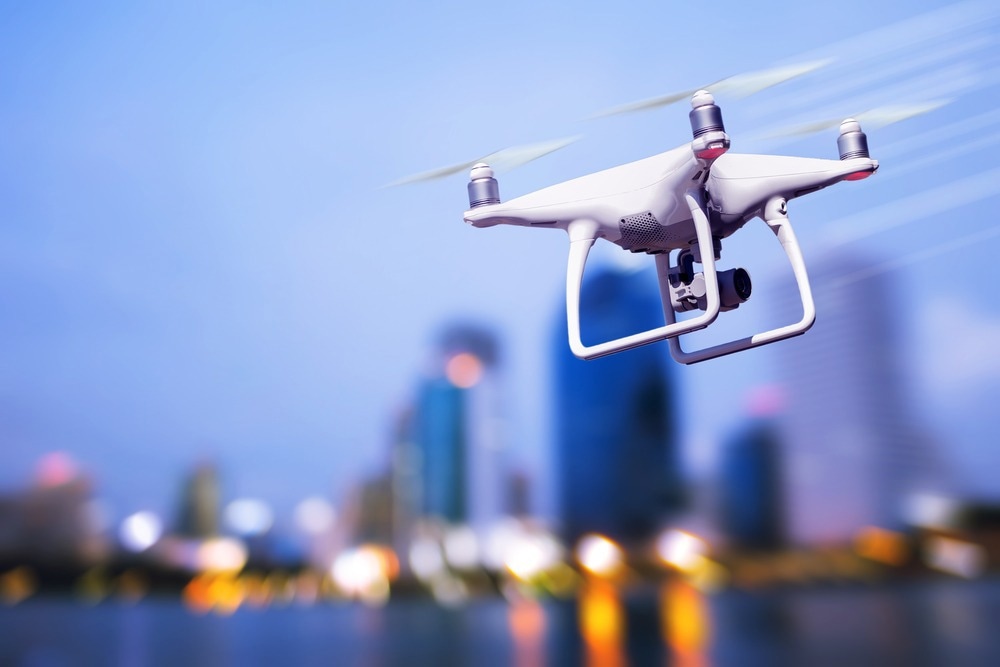The feasibility of deploying drones equipped with automated external defibrillators (AED) to attend to individuals suspected of having cardiac arrest was assessed by researchers at Karolinska Institutet.

Image Credit: SizeSquares/Shutterstock.com
In over 50% of the instances, the drones reached the location ahead of the ambulance, with an average lead time of three minutes. When the patient experienced cardiac arrest, the defibrillator delivered by the drone was utilized in most cases. These findings have been documented in the journal The Lancet Digital Health.
The use of an AED is the single most important factor in saving lives. We have been deploying drones equipped with AED since the summer of 2020 and show in this follow-up study that drones can arrive at the scene before an ambulance by several minutes. This lead time has meant that the AED could be used by people at the scene in several cases.
Andreas Claesson, Associate Professor and Principal investigator, Center for Cardiac Arrest Research, Department of Clinical Research and Education, Södersjukhuset, Karolinska Institutet
Every year, approximately 6,000 people in Sweden experience a sudden cardiac arrest, with only a fraction of those affected surviving. While an early shock with an Automated External Defibrillator (AED) significantly improves the chances of survival, these devices are not readily available in people’s homes, which is where the majority of cardiac arrests occur.
To reduce the time to defibrillation with an AED, Karolinska Institutet, in collaboration with Region Västra Götaland, SOS Alarm, and drone operator Everdrone, has been testing the concept of dispatching a drone with an AED simultaneously with an ambulance alert since 2020.
The project covered an area of approximately 200,000 people in western Sweden. The initial study conducted in the summer of 2020 in Gothenburg and Kungälv confirmed the feasibility and safety of the concept.
This more comprehensive and follow-up study now shows in a larger material that the methodology works throughout the year, summer and winter, in daylight and darkness. Drones can be alerted, arrive, deliver AED, and people on site have time to use the AED before the ambulance arrives.
Sofia Schierbeck, Study First Author and PhD Student, Karolinska Institutet
In the study, drones successfully delivered an AED in 55 instances of suspected cardiac arrest. Among these, the delivery preceded the arrival of an ambulance in 37 cases, amounting to 67 percent, with a median lead time of 3 minutes and 14 seconds.
Within the 18 confirmed cases of cardiac arrest, the AED was utilized by the caller in six instances, accounting for 33 percent. The device recommended a shock in two cases, and notably, one patient survived due to this intervention.
Andreas Claesson says, “Our study now shows once and for all that it is possible to deliver AED with drones and that this can be done several minutes before the arrival of the ambulance in connection with acute cardiac arrest. This time saving meant that the healthcare emergency center could instruct the person who called the ambulance to retrieve and use the AED in several cases before the ambulance arrived.”
The research was supported by the Swedish Heart-Lung Foundation.
Journal Reference
Schierbeck, S., et al. (2023). Drone delivery of automated external defibrillators compared with ambulance arrival in real-life suspected out-of-hospital cardiac arrests: a prospective observational study in Sweden. The Lancet Digital Health. doi.org/10.1016/S2589-7500(23)00161-9